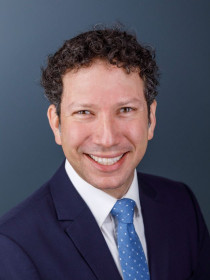
David Slusky
Connect with David
About David
Professor Slusky's research focuses on health outcomes. Overarching themes in his writings include women's health, religion, environmental exposure, in utero, the gig economy, and health insurance. He is also an Associate Professor of Population Health (by courtesy) at the University of Kansas, a faculty affiliate of the Institute for Policy & Social Research at the University of Kansas, a research associate at the National Bureau of Economic Research, and a Research Fellow at IZA - Institute for Labor Economics in Bonn, Germany. Previously, he was a management consultant in Oliver Wyman's financial services practice in New York City.
Contributions
Restricting Abortion Also Reduces Preventive Care
Publications
Notes in recent years, the government of Texas has enacted multiple restrictions and funding limitations on women's health organizations affiliated with the provision of abortion services, causing numerous clinic closures throughout the state, and drastically reducing access to reproductive health care. Finds that an increase of 100 miles to the nearest clinic results in a 1.2 percent increase in the fertility rate and a 2.4 percent increase in the fertility rate for unmarried women.
Examines the effect of changes in ownership from secular to Catholic (and vice versa) on reproductive health procedures that are likely to be affected. Finds that Catholic hospitals reduce the per bed annual rates of inpatient abortions by 30% and tubal ligations by 31%, whereas there is no significant change in related procedures such as D&Cs or C-sections.
Asks whether UberX’s entry into a city caused substitution away from traditional ambulances for low risk patients, reducing overall volume. Uses a city-panel over-time and leveraging that UberX enter markets sporadically over multiple years, finds that UberX entry reduced the per capital ambulance volume by at least 7%.
Finds, during the period that Flint, Michigan changed the source of its water, fertility rates decreased by 12% compared to other cities in Michigan.
Examines how exogenous within-location variation in sunlight across birth years affects the probability of asthma onset. Shows that this measurement of sunlight correlates with actual exposure, and consistent with preexisting results from the fetal development literature. Finds substantial and highly significant evidence in both data sets that increased sunlight during the second trimester lowers the subsequent probability of asthma.
Examines the impact of women's health clinic closures on women's preventive care use in Texas and Wisconsin using a unique policy context, data on clinic street addresses, and confidential respondent ZIP codes from the Behavioral Risk Factor Surveillance System. Concludes that an increase of 100 miles to the nearest clinic results in a decrease in the annual utilization rate of a clinical breast exam by 11 percent, a mammogram by 18 percent, and a Pap test by 14 percent.